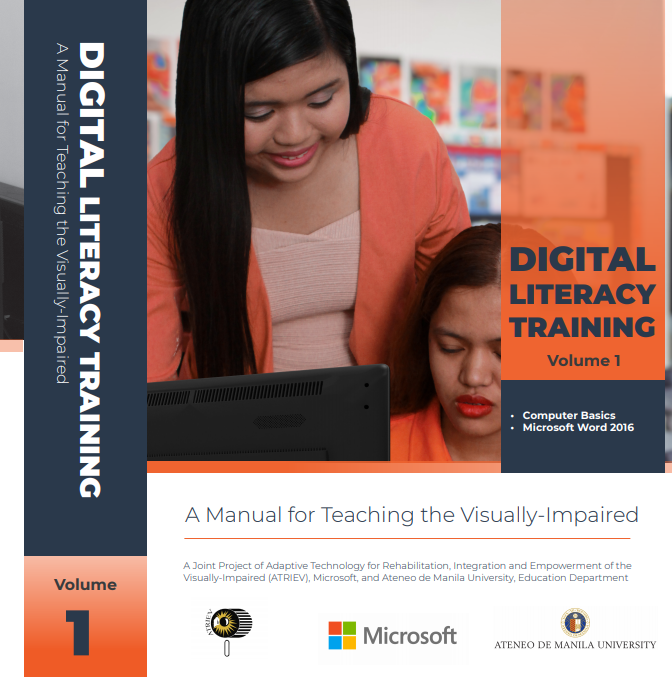Volume I – Unit 2: Microsoft Word 2016

Session 1: Reading text and cursor position
A. Introduction
As a person with visual impairment, we rely on hearing for us to navigate and read text on our document. Because of this, screen readers develop commands specifically for reading text in Microsoft Word.
B. Specific Objectives
At the end of this session, the trainees should be able to:
- Read text using different commands of NVDA.
- Identify the position of the cursor while reading the text.
C. Materials
- Laptop/Desktop
- Trainer’s manual
- Headset
- Speaker
- Tactile materials representing the document area with the cursor.
D. Activities
1. Unfreezing Activity
Instruction: Retype the following letters to create a word.
- gnreida
- rsuroc
- nceesetn
- rpraaphag
- neducsmto
The trainees will exchange their seating position to check their co-trainee’s work.
Note: The trainer will dictate the right answer after they switch places.
Please refer to Appendix E of this unit for the answer.
2. Lecture
Here are the basic commands for reading text using NVDA in Microsoft Word.
- Pressing Left and Right arrow keys will read the prior or next character.
- The screen reader will announce the letter on the cursor’s right side.
- Pressing Ctrl + Left and Ctrl + Right arrow keys will read the prior or next word.
- The screen reader will announce the word on the cursor’s right side.
- Pressing NVDA Modifier Key + Up arrow if your keyboard layout is Desktop, the screen reader will read the current line where the cursor resides. If your keyboard layout is Laptop, just press NVDA + L.
- Pressing Up and Down arrow will read the prior or next line.
- Regardless of where the cursor falls on that line, the screen reader will announce the entire line.
- Pressing Alt + Down or Up arrow keys will read prior or next sentence.
- The screen reader will announce the sentence on the cursor’s right side. To be more specific the cursor can be found at the beginning letter of the sentence.
- Pressing Ctrl + Up or Ctrl + Down arrow keys will read prior or next paragraph.
- The screen reader will announce the paragraph on the left side of the cursor. To be specific, the right side of the cursor is the first letter of the paragraph.
- When your keyboard layout is set to laptop, pressing NVDA Modifier key + A will read from the cursor to the end of the document. But if your keyboard layout is set to Desktop, the keyboard shortcut for this is NVDA + Down arrow.
- NVDA also has reviewing text commands.
- To further study commands for reviewing text, go to NVDA context menu and select Help and look for Commands Quick reference.
Note: When you perform these commands the cursor will not follow to what the screen reader is saying because NVDA has its own Review Cursor.
3. Demonstration
The trainer will demonstrate the following in front of the training room.
- Read per character.
Trainer’s guide Make sure that you grab the attention of your students. Move your cursor to right and let the trainees identify the letter on the left or the right side of your cursor. Emphasize the importance of the position of the cursor for the upcoming sessions.
- Read per word.
Again, emphasize the letter or even space around the cursor. The trainees must be aware of the exact position of the cursor.
- Read per Sentence
- Read per paragraph
- Read from the cursor up to the end of the documents.
You can download the full version of this lesson through this link: Volume I – Unit 2: Microsoft Word 2016
Want a full version of this manual? Join our training of trainers. Watch-out for the announcements of trainings here on our website or like and visit our official Facebook page at https://www.facebook.com/atrievofficial.
See you there!
